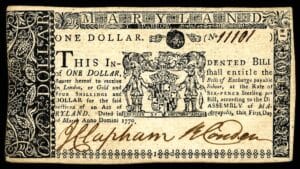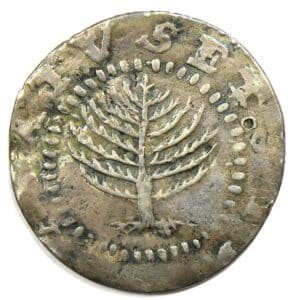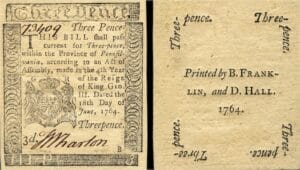In the earliest days of the American colonies, coins were scarce and not widely used. Instead of relying on a formal currency system, colonists primarily engaged in barter to obtain the goods and services they needed. Everyday necessities and services were exchanged using practical items such as furs, grain, fish, tobacco, gunpowder, and even musket balls. These commodities served as functional mediums of exchange in a frontier economy where official currency was limited or entirely absent, and such improvisation became a way of life for settlers trying to build sustainable communities.
As the colonies grew—both in population and in economic activity—the limitations of a barter-based system became more pronounced. With expanding trade networks, especially with Europe and the Caribbean, foreign coins began to make their way into the colonies. Gold and silver pieces from England, France, Spain, and the Netherlands circulated widely, gradually supplementing the informal economy. Though these coins were commonly accepted in transactions, their inconsistent supply and varying exchange rates often led to confusion and disputes in everyday commerce, highlighting the need for a more stable and standardized medium of exchange.
Recognizing this economic challenge, some colonial governments took bold steps toward financial self-reliance. A number of colonies began minting their own coins or arranging for coinage to be struck on their behalf overseas. One of the most famous examples is the Massachusetts Bay Colony’s “Pine Tree Shillings,” which were among the first coins produced in English-speaking North America. These coins not only provided a practical solution to monetary shortages but also symbolized an emerging sense of regional autonomy and economic independence—foreshadowing the spirit that would eventually fuel the American Revolution.
Today, colonial coins are more than mere historical curiosities. They are highly valued by collectors and numismatists for their craftsmanship, rarity, and the rich stories they tell. These coins offer a tangible link to the struggles, resilience, and ingenuity of early American settlers. Depending on factors such as condition, variety, and rarity, their value can range from just a few dollars for common, well-worn examples to many thousands of dollars for scarce specimens in mint condition.
We are always actively seeking to acquire colonial coins of all types and conditions. Whether you possess a widely circulated example or a rare and exceptional piece, we would be glad to evaluate it and potentially make an offer. Your coin could be not only a valuable collectible, but also a meaningful piece of the complex and fascinating history of early America—a legacy worth preserving and sharing with future generations.



